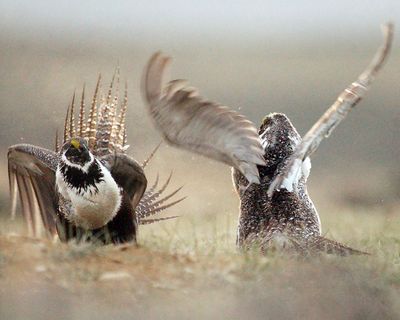Idaho considers scaling back sage grouse hunting

HUNTING — Idaho is considering more restrictions on hunting sage grouse, including closures on south-state areas where the number of males at breeding grounds has declined more than 50 percent in three years.
- Montana already has decided to close sage grouse hunting in some districts this year.
Sage-grouse are proposed for listing under the federal Endangered Species Act; primarily due to habitat loss from such things as wildfire and invasive plants like cheat grass, department officials say. “Sage-grouse experts have determined that carefully regulated hunting is not a primary threat to populations, and Fish and Game closely monitors sage-grouse annually to ensure hunting will not compromise the population,” the agency said in media release.
Idaho Fish and Game is seeking public input on sage-grouse hunting proposals through Aug. 5. Upland bird managers will present sage-grouse hunting season recommendations to the Idaho Fish and Game Commission at their Aug. 11 meeting.
Recommendations are based on the current 3-year running average of male sage-grouse counted at leks (breeding sites) to counts from 1996–2000 when Idaho began intensified surveys statewide. Current sage-grouse lek data indicate that many populations could be hunted at the “restrictive” level.
Idaho is considering two options for the 2014 season:
-
Option A: no change from the 2013 season.
- Restrictive: Seven-day, one-bird daily limit statewide within sage-grouse range, except in designated closed areas, Sept. 20-26.
- Closed: East Idaho Uplands area in southeastern Idaho; Washington and Adams counties; Eastern Owyhee County and western Twin Falls County; and Elmore County.
- Option B: same as Option A, but would add a new closure in parts of Bannock, Cassia, Oneida, and Power counties. Males at leks in this area have declined by 53% since 2011.
* This story was originally published as a post from the blog "Outdoors Blog." Read all stories from this blog